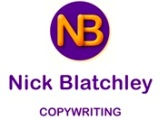At one time, finding business contacts was tricky — but introducing yourself was simple enough. You had to be meet through an intermediary, or else go somewhere where there’d be other business owners, such as a conference, an award ceremony etc.
Once you were face to face, though, all you needed to do was talk. Yes, you had to be careful (it takes only seconds to form a first impression, good or bad) but you could watch the reactions and adjust accordingly.
The opposite is true today. You can find pretty much anyone on social media — but how do you introduce yourself? After all, you can’t see how people are reacting to you, and if you get it wrong you’re unlikely to know. They’ll just quietly move on to the next contact.
That’s why your online profiles are crucial, because they provide those few seconds for people to get their first impression of you. They can be anywhere from social media platforms to professional organisation websites, but if you’re a business owner, especially one who focuses on B2B, your crucial profile for making great first impressions is going to be LinkedIn.
What Should Be in Your Profile — and What Shouldn’t?
What your profile doesn’t need is a detailed description of what you do. Obviously, you need to give some idea (and yes, I have come across profiles that left me none the wiser) but the aim is to get the reader interested enough to talk to you. If they really want a blow-by-blow account of how you manufacture widgets, you can give it then — along with your sales pitch.
So, a summary of what you do — but it should focus on what the reader will get out of your services. Unless you’re extremely niche, there are probably thousands of people doing what you do. That means your aim isn’t to tell the reader about making widgets — it’s to show how your whole process makes buying widgets special.
Show both that you understand the issues your target client will be facing and how you can solve it. The two best ways of doing that are your experience and your past achievements. Again, you don’t need an exhaustive list of your experience (on LinkedIn, that should be available elsewhere, anyway). Just pick a couple of key points.
It’s very powerful to cite one or two specific cases where you’ve made a significant difference to your customer. If you have testimonials, quote from them — after all, what other people say about you is far more powerful than what you say.
Also, remember that the reader’s going to be interested in you as a person, not just as a company. While it will depend to some extent on the context, on social media certainly you can talk about your interests and hobbies. And that might include your three dogs, for instance — after all, if something special to you puts someone off, do you really want to know them? And far more people will be attracted.
How to Write Your Profile?
Even if you’re representing a business, you’re writing your profile as yourself, so write in a way that “sounds” like you. Obviously, that’s going to depend to some extent on your business. I wouldn’t expect, for instance, a game designer and a solicitor to introduce themselves in the same way.
All the same, it’s important to come over naturally. Here are a few of the most important things to remember:
- Don’t think you have to avoid colloquialisms such as contractions (don’t and it’s instead of do not and it is). If you’d say it, write it that way.
- Avoid jargon and corporate-speak. You’re a person, not an entity.
- As far as possible, keep your writing in the active voice rather than the passive (“I did A, B and C” rather than “A, B and C were done”). There’s a time and place for passive voice, but your profile isn’t it.
- Write in a way that will relate to the reader you’d most love to have as a client. If you try to write for “everyone”, you’ll end up writing for no-one.
- Write with enthusiasm. If you don’t come over as being excited about what you do, why should anyone else be excited?
Remember the Call to Action
You should know what you ideally want the reader to do when they’ve finished your profile — so tell them. But be specific, not just “get in touch” or “check me out”. Typical actions might be “phone me”, “email me”, “PM me”, “look at my website” or “download this”.
Give the reader the exact information they need to do what you want, and it’s best to restrict it to one or two options, to avoid confusion. So, for example, you might say “phone me on XXX or email me on YYY”.
Do You Need Help?
It’s vital to get your LinkedIn profile exactly right, but it isn’t easy. As with any marketing content, using a copywriter may be an option — but it needs to be a copywriter who can capture your unique voice.
The last client I wrote a LinkedIn profile for commented “That’s exactly what I’d have said — but better.” Email me on nick@nickblatchleycopywriting.co.uk if you want a profile that’s both personal and polished.

